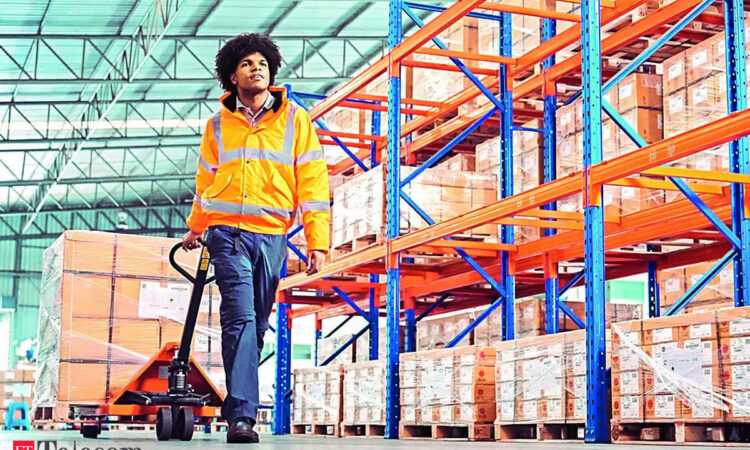
Washington: The Biden administration has begun pumping more than $2 trillion into US factories and infrastructure, investing huge sums to try to strengthen American industry and fight climate change. But the effort is facing a familiar threat: a surge of low-priced products from China. That is drawing the attention of President Joe Biden and his aides, who are considering new protectionist measures to make sure American industry can compete against Beijing.
As US factories spin up to produce electric vehicles, semiconductors and solar panels, China is flooding the market with similar goods, often at significantly lower prices. A similar influx is also hitting the European market.
American executives and officials argue that China’s actions violate global trade rules. The concerns are spurring new calls in the US and Europe for higher tariffs on Chinese imports, potentially escalating what is already a contentious relationship between China and the West.
continued below
The Chinese imports mirror a surge that undercut the Obama administration’s efforts to seed domestic solar manufacturing after the 2008 financial crisis and drove some American startups out of business. The administration retaliated with tariffs on solar equipment from China, sparking a dispute at the WTO.
Some Biden officials are concerned that Chinese products could once again threaten the survival of US factories at a moment when the government is spending huge sums to jump-start domestic manufacturing. Administration officials appear likely to raise tariffs on electric vehicles and other strategic goods from China, as part of a review of the levies President Donald Trump imposed on China four years ago, according to people familiar with the matter. That review, which has been underway since Biden took office, could finally conclude in the next few months.
Congress is also agitating for more protections. In a Jan. 5 letter to the Biden administration, bipartisan members of a House committee expressed concerns about China flooding the US with semiconductors. Lawmakers asked whether the government could establish a new “component” tariff that would tax a chip imported inside another finished product.
That followed a November letter in which members of the same committee advised the Biden administration to consider a new trade case over China’s electric vehicle subsidies, which could result in additional tariffs on cars.
Katherine Tai, the US trade representative, told the lawmakers that she shared concerns about China’s practices in the electric vehicle industry, according to a Jan. 4 letter that was shared with The New York Times.
The US has maintained tariffs on hundreds of billions of dollars of Chinese products over the past five years, viewing that as a way to offset Beijing’s ability to undercut American manufacturers by selling cheaper products into the US. Biden has tried to further help American companies with billions in subsidies intended to boost US manufacturing of clean energy technology such as solar panels, electric vehicles along with semiconductors.
Yet Chinese industrial policy spending still far outstrips that of the US. Facing a slowdown and a gradual bursting of the property bubble, the Chinese government has recently redoubled efforts to promote exports and support its factory sector. Beijing is particularly focused on investment in high-tech products with strategic importance, such as electric vehicles and semiconductors, said Ilaria Mazzocco, a senior fellow in Chinese business and economics at the Centre for Strategic and International Studies, a Washington think tank. Some of China’s success stems from its larger market – which gives Chinese firms the scale and opportunity to hone their products – along with its vast pool of talented engineers. China sold about 6.7 million all-electric vehicles last year, for example, compared with around 1.2 million units in the US. The Chinese government has said that it competes fairly and described US trade measures as protectionist. But Wendy Cutler, the vice president at the Asia Society Policy Institute and a former trade negotiator, said China’s clean energy and semiconductor industries had received a lot of state assistance, in the form of tax credits, access to cheaper energy and equity infusions. “The list goes on and on,” she said. “As Chinese companies avail themselves of these type of systems, it just leads to overcapacity.”
China’s hefty investments into semiconductors, including a new $40 billion fund to support the industry, are also worrying companies investing in new US chip facilities. China accounts for a relatively small share of global chip production – only about 7% in 2022. But experts say that the country is spending more on its semiconductor industry than the US and Europe combined, and that it could become the world’s largest maker of chips in the next decade.
Dan Hutcheson, the vice chair of research firm TechInsights, said the fear was that China would do for semiconductors what it did for shipping, solar cells or steel – build up excess capacity and then drive foreign competitors out of business.
The US can – and does – impose tariffs on Chinese exports that are unfairly subsidized or sold in the American market for less than it cost to make them. This month, it slapped tariffs of more than 120% on Chinese steel.
But even when Chinese goods are blocked from the US, they can flow into other countries. That pushes prices down globally to levels with which US firms say they cannot compete, and crowds American firms out of foreign markets, cutting into their revenue and competitiveness.
Some say the US should simply embrace cheap Chinese-made solar panels and legacy chips, instead of imposing tariffs that raise costs for American consumers and factories that use imported inputs.
Most Read in Industry
Join the community of 2M+ industry professionals
Subscribe to our newsletter to get latest insights & analysis.
Download ETTelecom App
- Get Realtime updates
- Save your favourite articles






